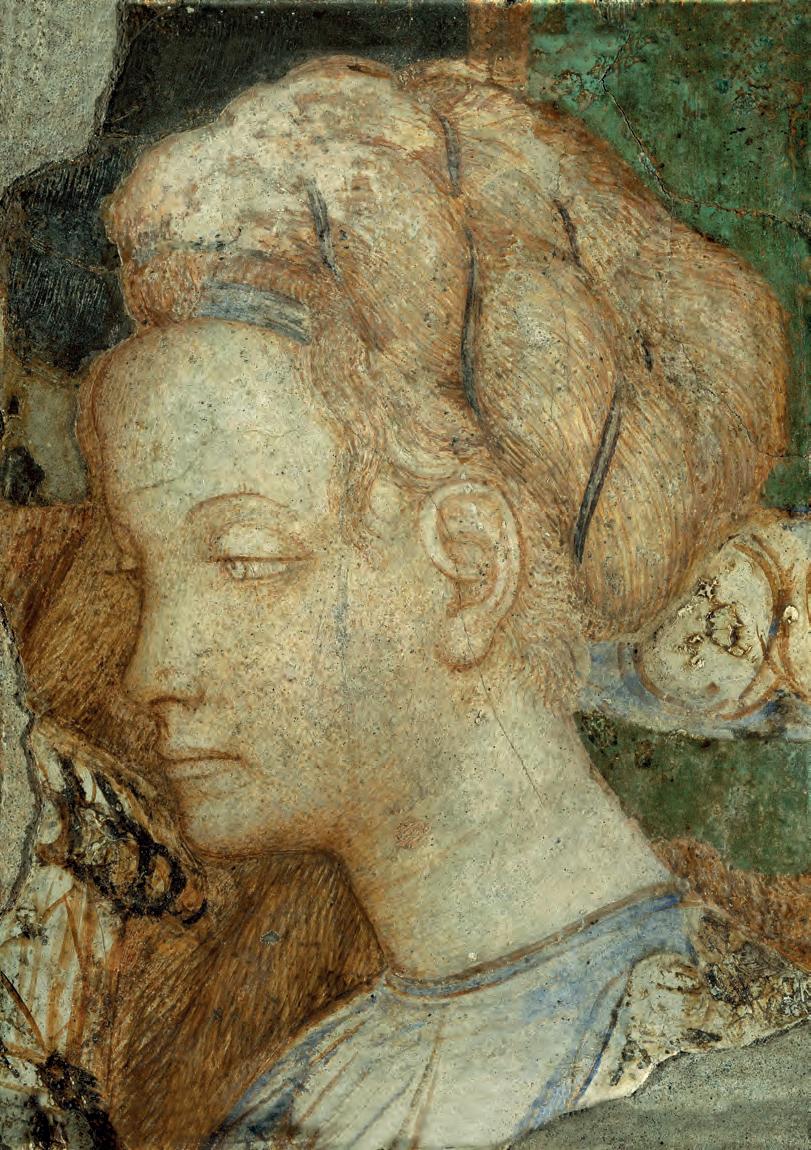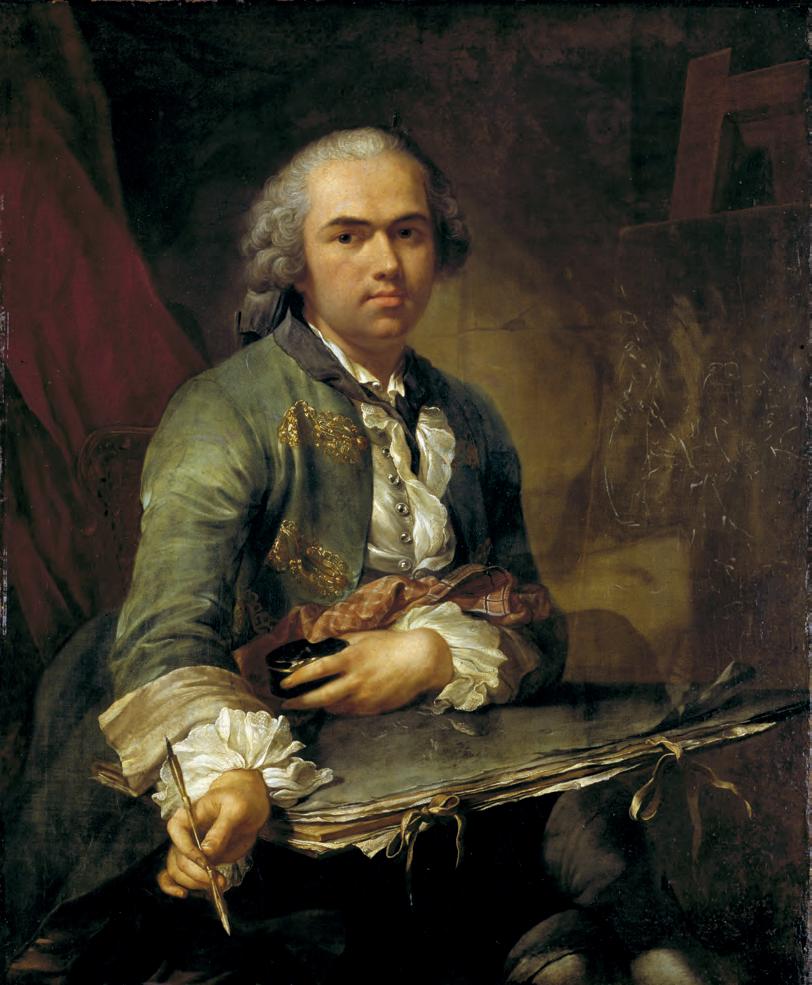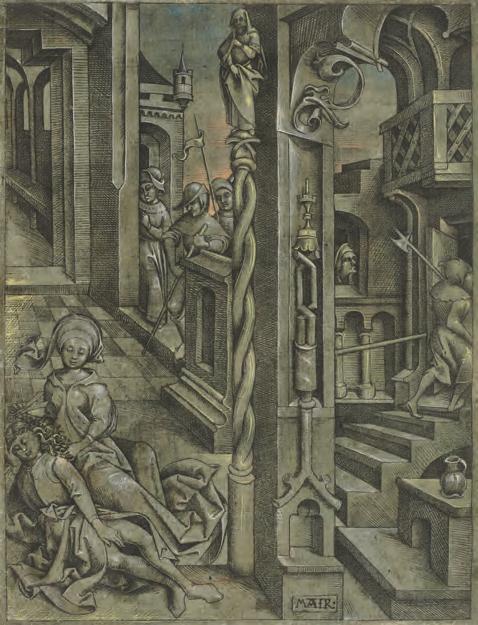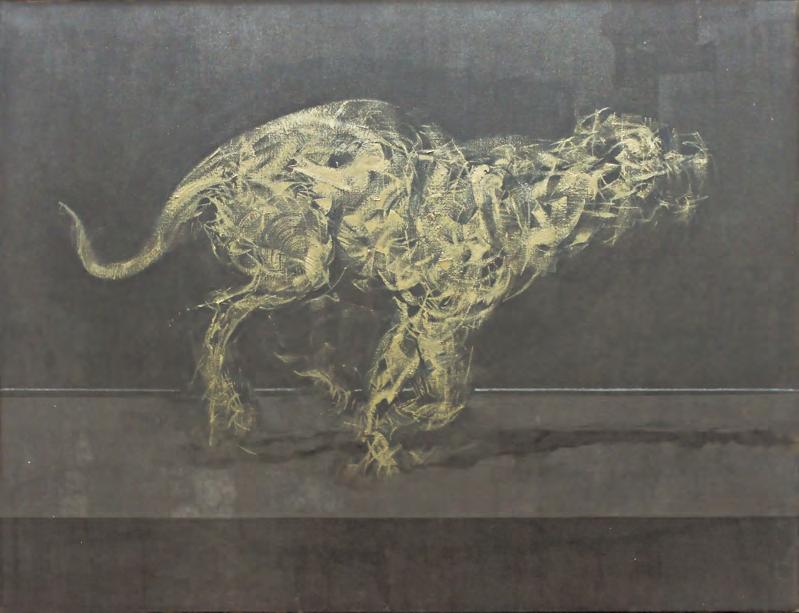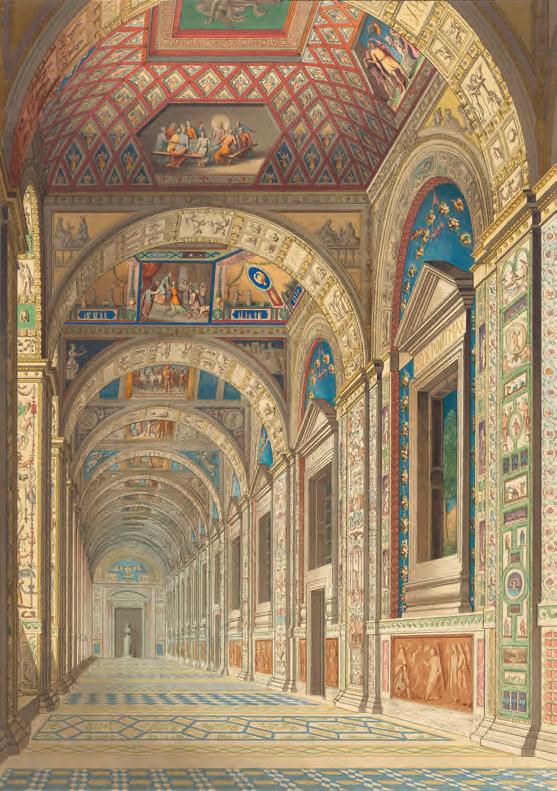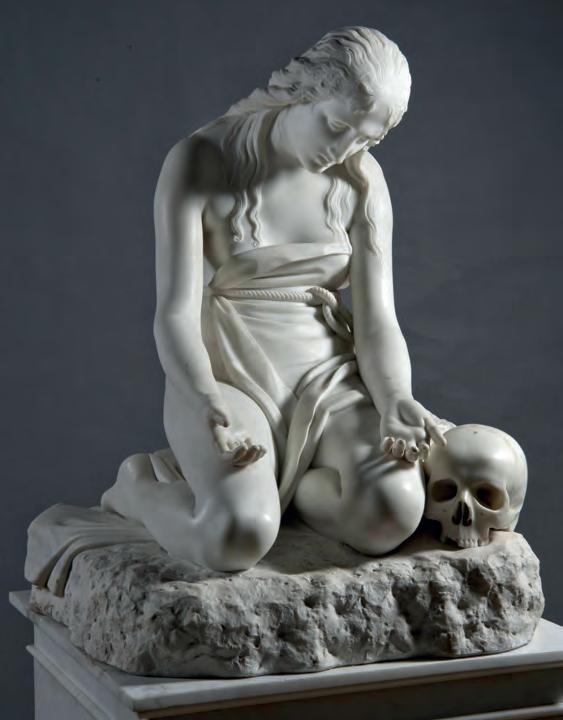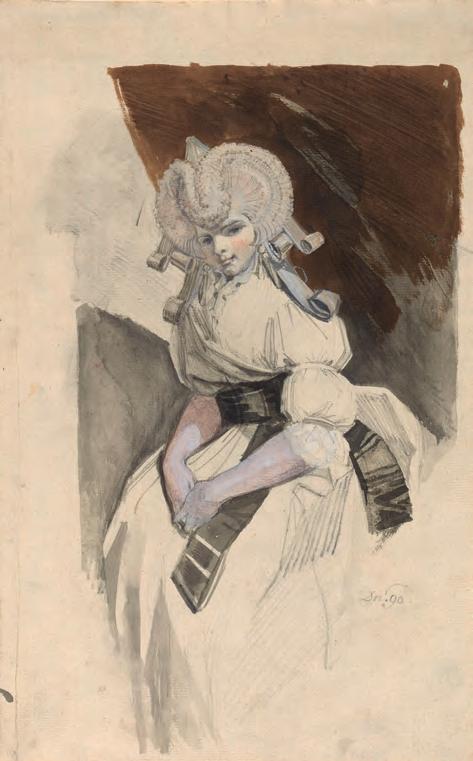
2 minute read
Paul Signac: Journal 1894–1909
drawing in the process of creating paintings, a lesson that would serve him throughout his life. Thinning of the paint due to ageing has revealed a drawing of a male nude on the right side of the canvas. It resembles Piazzetta’s style of drawing, underlining the master’s influence on Tischbein. The self-portrait is displayed alongside two drawings of male nudes (Kunstsammlungen der Universität Göttingen), which Tischbein made in Rome in 1750 and in Venice in 1751.
A number of works in the exhibition demonstrate Tischbein’s interest in oil sketches, as well as drawings, which allowed him to develop the rich flow of ideas that his contemporaries admired. In a largescale portrait of his family (1774–76; private collection) Tischbein highlighted the value of preparatory designs. In the centre of the painting, the artist’s eldest daughter and pupil, Amalie, looks out towards the viewer, holding in her hand the first design for the painting, which encapsulates the artist’s creation. It is signed and dated and carries the inscription ‘first design of my family painting’.
Advertisement
Tischbein always carefully researched his subjects before starting to prepare his history paintings. His sketches often contain references to literary sources, emphasising the accuracy of his depictions of historical events. He also took advice from learned friends on historical matters. As the son of a baker working in a hospital at Haina, the artist had received hardly any education. Nonetheless, in 1777, he was one of the three founding directors of the Art Academy of Kassel. The great confidence with which he worked is illustrated in the exhibition by an early sketch for Coriolanus taking leave from his family (Graphische
14. Landgravine Philippine of Hesse-Kassel (1745–1800) and Selim Schwartz (?), by Johann Heinrich Tischbein the Elder. c.1774–76. Oil on canvas, 65.3 by 53.4 cm. (Private collection; exh. Schloss Wilhelmshöhe, Museumslandschaft Hessen Kassel). 15. Portrait study of Selim Schwartz (?), by Johann Heinrich Tischbein the Elder. c.1774. Graphite, black and red chalk on paper, 20 by 15.8 cm. (Graphische Sammlung, Schloss Wilhelmshöhe, Museumslandschaft Hessen Kassel). Sammlung, Schloss Wilhelmshöhe). In 1752 Tischbein used it with only minor changes as the basis for a lost history painting for his patron, Johann Philipp Graf von Stadion, and he reused it in 1775 for a second version (Weißensteinflügel, Schloss Wilhelmshöhe) painted for Landgrave Friederich II, Wilhelm VIII’s son. Clearly, he still considered his composition as exemplary twenty years after he had created it.
Of particularly interest are Tischbein’s ‘ricordi’, small portrait heads in red and black chalk, drawn from life. In the exhibition examples of these drawings are combined with the paintings for which they were made. For example, the portrait of the family of the wine merchant and collector Joachim Timmermann, sitting with guests at a concert under a loggia (Gemäldegalerie Alte Meister, Schloss Wilhelmshöhe), painted when Tischbein travelled to Hamburg in 1758 during the Seven Years’ War, is framed by the preparatory portrait heads. As a result of their research for the exhibition, Lange and Rotter were able to identify the sitter of one of Tischbein’s portrait heads, a Black


